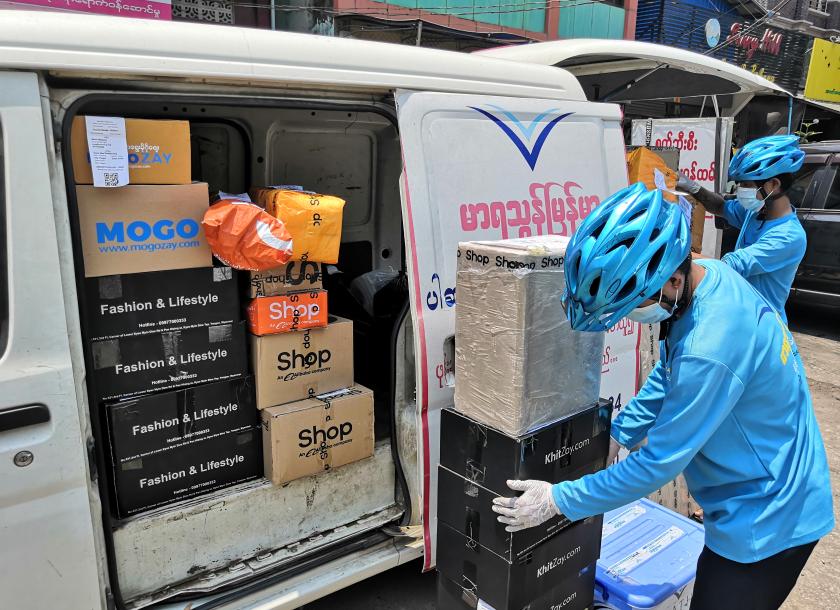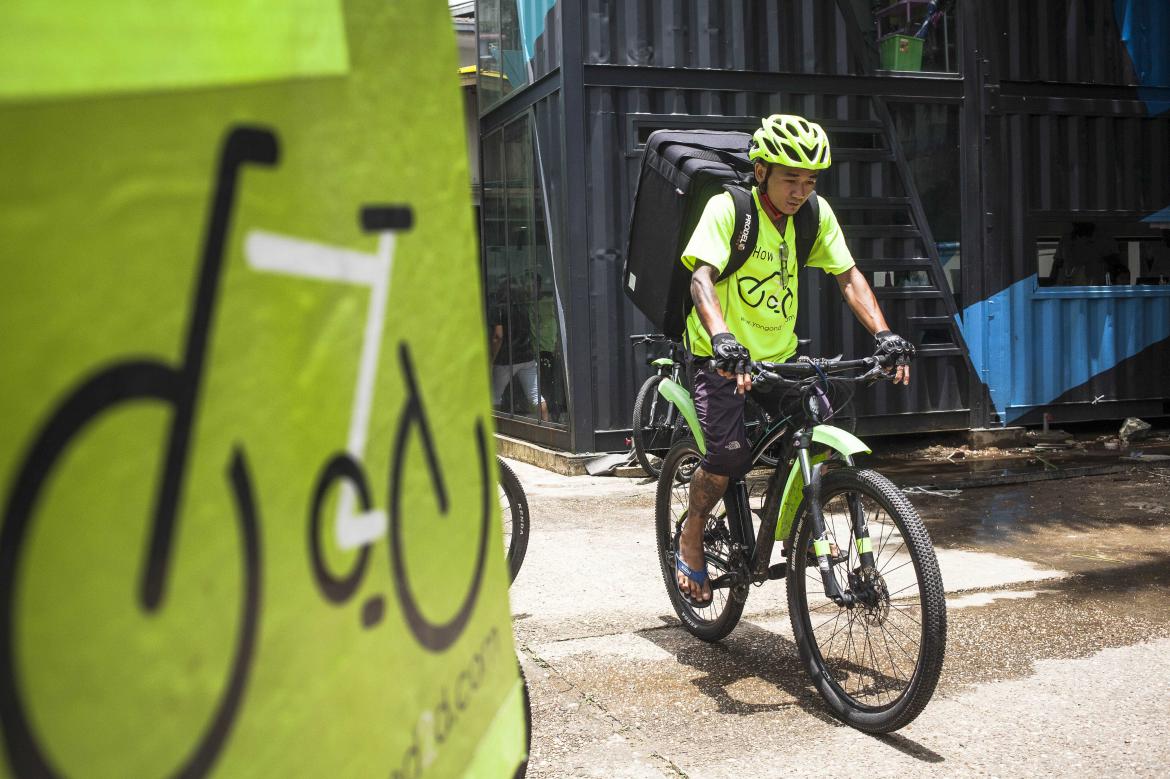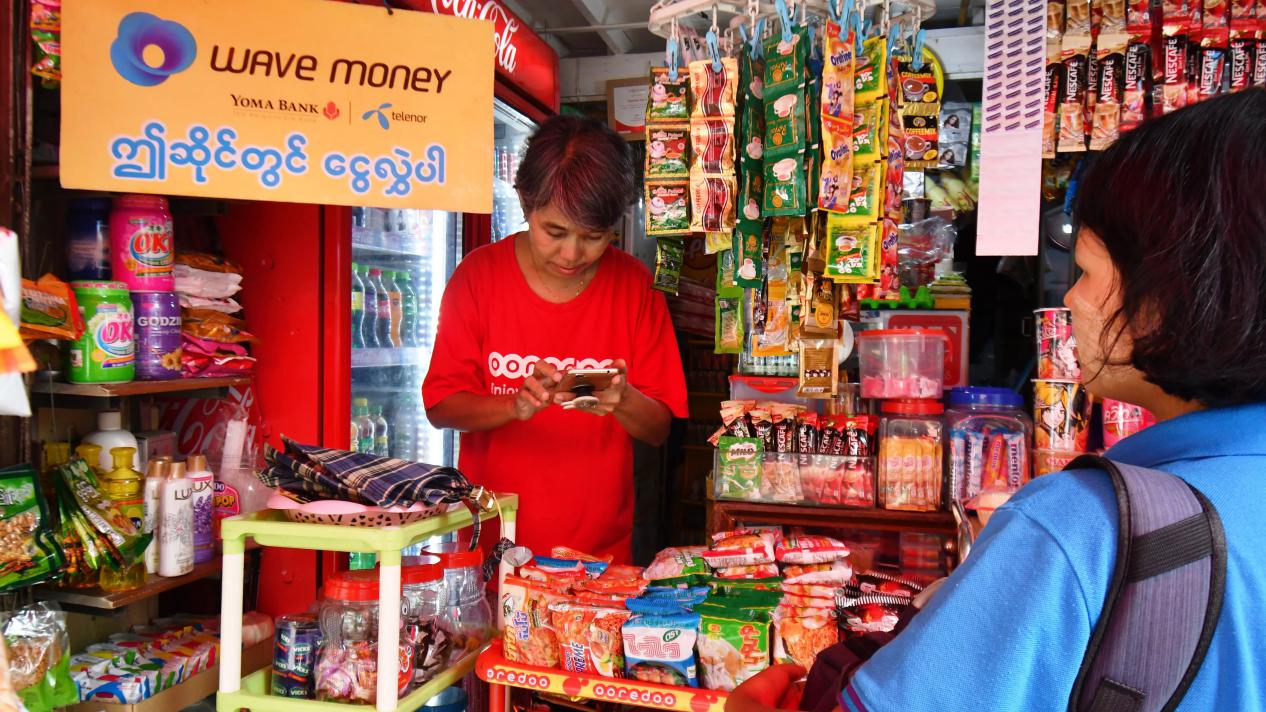

(By Jes Kaliebe Peterseni )People and businesses in Myanmar have all felt the impact of the COVID-19 in one way or another, and there are big and important questions about when and how the economy will recover. But there is a silver lining in how we’ve all been forced to change our ways in recent months, and that is in the use of technology to speed communications, business and overall economic growth.
Myanmar had its first big digital moment in 2014, as the new telecoms started offering inexpensive SIM cards and high-speed internet access. Fueled by widely available smartphones, internet adoption grew so much that Myanmar now has more mobile connections than people and the vast majority regularly uses the internet.
When much of Myanmar closed in March and April, something interesting happened - many businesses and organizations kept up their work and activities despite closing their offices and asking their staff to work from home. Productivity remained high at lots of companies large and small thanks to video conferencing, online collaboration tools and digital payments, many of which have been available in Myanmar for a long time but over the past four months have seen a surge in usage. Telecom operator Telenor reported that usage of the video conferencing app Zoom increased by 1373% from March 1 to April 19. Also, internet traffic rose by 27%.
Many retailers quickly began to rely on e-commerce, and logistics companies have seen a rapid increase in distribution of digitally purchased goods. Okkar Phyo, CEO of logistics company Marathon Myanmar, which serves more than 600 companies that sell goods online, reported a 20% growth in parcel deliveries since the COVID-19 broke out, compared to the preceding quarter. Much of this volume has been fueled by demand outside of the biggest cities. This is an encouraging sign, as until recently, most digital trade in Myanmar happened in Yangon. Now, 65pc of Marathon’s volume comes from towns and cities outside of Yangon, compared to 40% prior to the COVID-19. Okkar Phyo said “Because of the COVID-19, lots of companies had to rethink, and we are seeing new categories of clients, including SMEs, local manufacturers as well as conglomerates approach us because they want to sell and distribute online.”

Online food deliverer Yangon Door2Door also saw a 20% growth of orders in recent months due to a broader segment of the population using their service.“When we started in 2013 our delivery fees started at K4000, and our customers were middle- and upper-class Myanmar and expats. Now we receive orders from areas that are relatively middle-class,” said CEO Shady Ramadan.

An important barrier for digital trade is payments. Myanmar’s economy has been predominantly cash-based, and while new digital payment systems have launched in recent years, lots of business is still settled with cash. This might be about to change. Mobile money provider Wave Money reported in May that “the adoption of digital payments has skyrocketed in recent weeks as societies implement strict public health measures and minimize cash handling to prevent the spread of the COVID-19.” This could be a sign that digital payments are finally catching on because businesses and consumers in Myanmar recognize the convenience of not having to handle cash.

Government has been quick to improve public communications since the COVID-19 broke out, and much of this has been delivered online. In what was to many a surprise move, State Counsellor Daw Aung San Suu Kyi used a Facebook page to publish videos with words of encouragement and guidance as part of the government’s efforts to fight the COVID-19.
Perhaps inspired by this act of leadership, the government’s epidemic relief plans include several specific actions that employ technology. One of these actions involves Wave Money partnering with the Social Security Board and other government agencies to disburse epidemic relief payments and loans.
Building a platform for a digitally enabled economy requires the cooperation of the private sector and policymakers. But at a more basic level, it requires a workforce with the necessary skills to use technology productively, and to build the next generation of digital business systems, products and communications. While most people in Myanmar have grown up with essentially no access to those skills, we are seeing the start of a positive development here, too. When the COVID-19 broke out, Phandeeyar Institute, our digital skills training academy, launched a remote learning festival featuring more than 30 different digital skills classes online. More than 5000 people from across Myanmar signed up to participate, mostly young and mid-career professionals interested in acquiring the skills necessary to advance their careers.
All of this shows that we’re about to see a new wave of digital activity in Myanmar. Now business, government and organizations are embracing the potential of technology to transform how they work, grow and interact with their communities. This second digital moment can be an important part of Myanmar’s economic and democratic growth when we eventually get past the COVID-19. If business leaders and policymakers continue to recognize this potential and adopt a decisive but responsible strategy for innovation through technology — importantly, one that considers the privacy and rights of users — this could help shape Myanmar’s economy for decades to come.
We must not underestimate the negative consequences of the COVID-19 on Myanmar’s economy. Large parts of the private sector are very fragile, and lots of livelihoods are likely to be impacted by a protracted recovery from the pandemic. However, it is important that businesses and the public sector take something positive away from these months of economic strain.
Myanmar’s silver lining may very well lie in the potential to digitally transform businesses and government by using technology to expand their reach, and make markets stronger, better connected and more efficient. If the past four months have offered a glimpse of what the future may look like, then Myanmar’s second digital moment will be a yardstick for future economic growth.
Source:The Myanmar Times
桂ICP备14000177号 Copyright@2006-2013 Guangxi China-ASEAN Panorama Magazine Agency Co., Ltd. All Rights Reserved